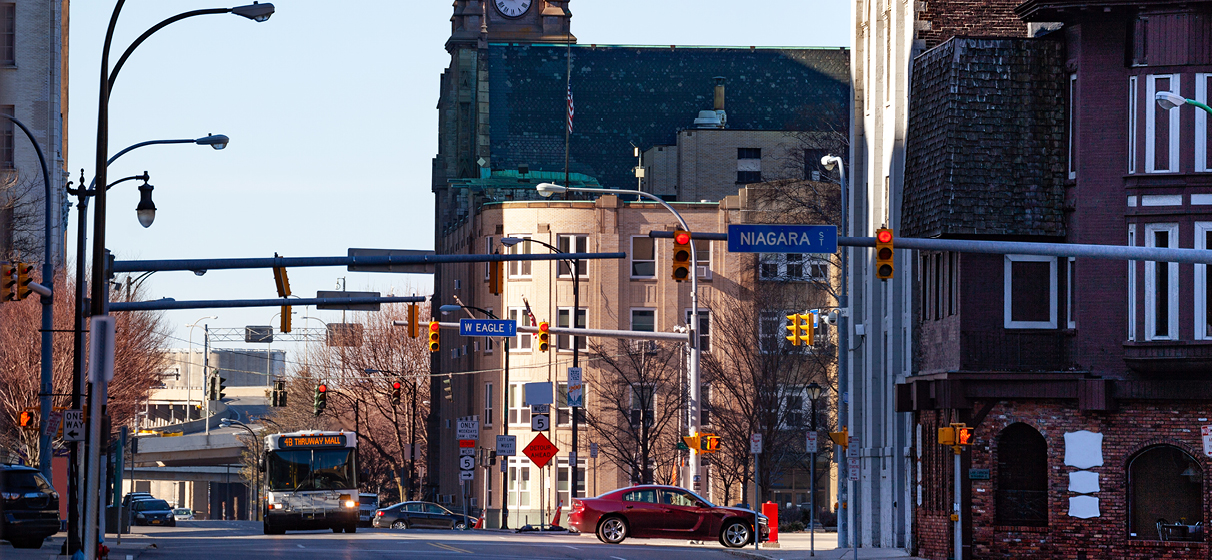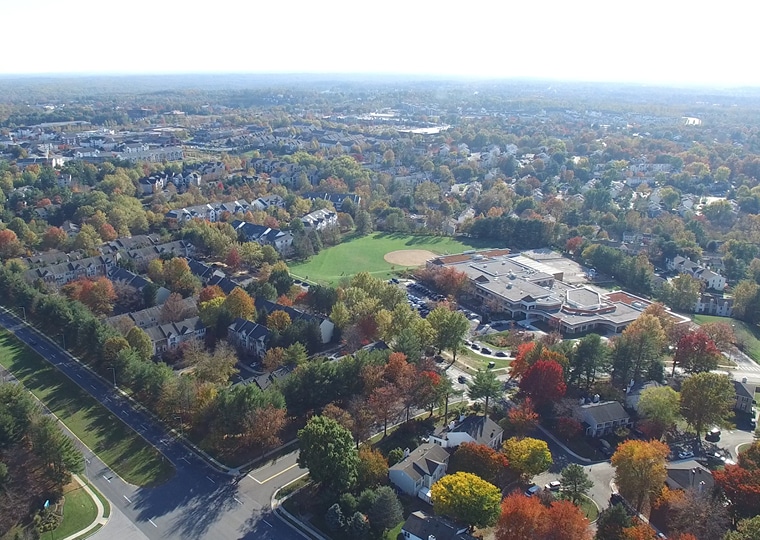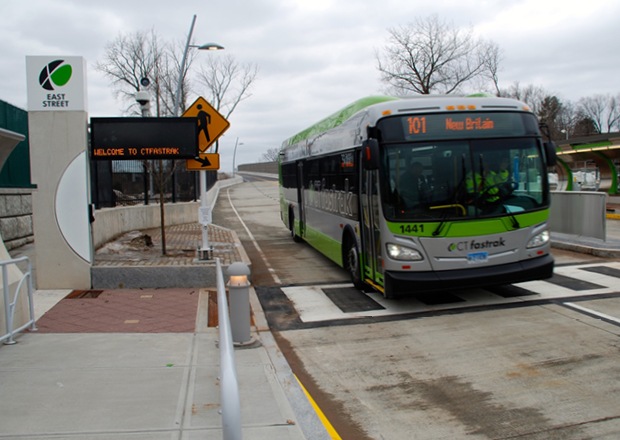The 7.5-mile Bailey Avenue corridor is a vital north-south thoroughfare connecting the City of Buffalo and the University of Buffalo South Campus. It plays a pivotal role in connecting various parts of the city and linking with neighboring municipalities such as Amherst, Cheektowaga and Lackawanna.
In 2021, the city, in collaboration with the Greater Buffalo-Niagara Regional Transportation Council and the Niagara Frontier Transportation Authority (NFTA) released the Bailey Avenue Corridor Improvements Study, a plan that analyzes existing transportation infrastructure along Bailey Avenue and identifies long-term approaches to streetscape and transit enhancements. The goal of these improvements is to improve access to crucial transportation services to all users and reduce traffic congestion, while also creating central places for people to safely gather and walk.
STV’s bus transportation team, which has a long-standing history of promoting mobility while creating more sustainable solutions in the communities we serve, is proud to partner with the NFTA in the next phase of this visionary plan which is to transform Bailey Avenue into a new bus rapid transit (BRT) corridor that will provide more seamless access for commuters. STV, as a subconsultant to Creighton Manning, is providing design, engineering, environmental assessment and the complete planning of street infrastructure, including stations, terminals, passenger and staff amenities, as well as the implementation of bus and transit signal priority measures for this corridor.
As part of this team, our mission is to elevate the commuter experience by delivering a faster, more convenient and comfortable journey. Through innovative design, we aim to enhance safety and aesthetics along the corridor, integrating elements such as lighting, landscaping, wayfinding and public art. Our commitment extends to fostering improved pedestrian and bicycle mobility, creating seamless connections to transit for a more vibrant and accessible community.
Central to this program is creating more equity for all residents and business owners in the region. In addition to highlighting issues like infrastructure deterioration, unsafe pedestrian conditions and inefficiencies in vehicular travel, the Bailey Avenue Corridor Improvement Study also sought to confront historical and present-day challenges related to racial equity and barriers to opportunity, including overreliance on automobiles. Upon the program receiving state funding earlier this year, New York State Senator Tim Kennedy said the program was allowing the region to dig themselves out of “decades of neglect.”
For STV, incorporating an equity and inclusion plan is paramount to this project. This plan will not only articulate a fair vision and objectives for the outreach and engagement process but also outline a systematic approach to identifying the community’s key needs and priorities.
The corridor currently features two to four vehicle lanes, contingent on the specific section and encompasses a diverse range of land uses, spanning from industrial to commercial to residential, and includes several vibrant retail and commercial clusters.
Bus routes along Bailey Avenue consistently demonstrate robust ridership, making them some of the most heavily used in the NFTA-Metro system. And the expectation is that ridership will continue to grow. The corridor’s northern terminus connects to University Station, a bustling hub consisting of the Metro Rail light rail line and 13 other fixed-route bus services, making it one of the system’s busiest stops.
Further demonstrating the project’s importance to the region, it was recently a recipient of a $102.7 million grant from the Federal Transit Administration.
STV will conduct a qualitative scoring analysis to assess the potential impact on development patterns surrounding the transit investment, considering changes in population, employment, Vehicle Miles Traveled and estimating associated environmental benefits.
We are truly excited about contributing to this project and the substantial positive impact it is poised to have on the community and environmental sustainability.








